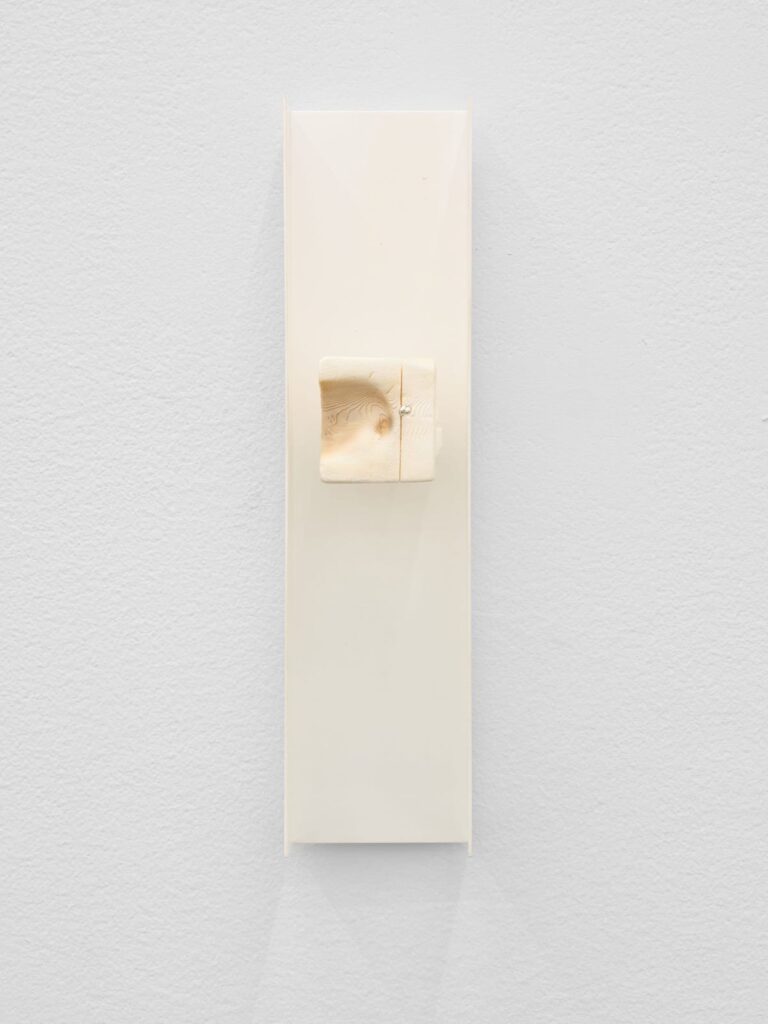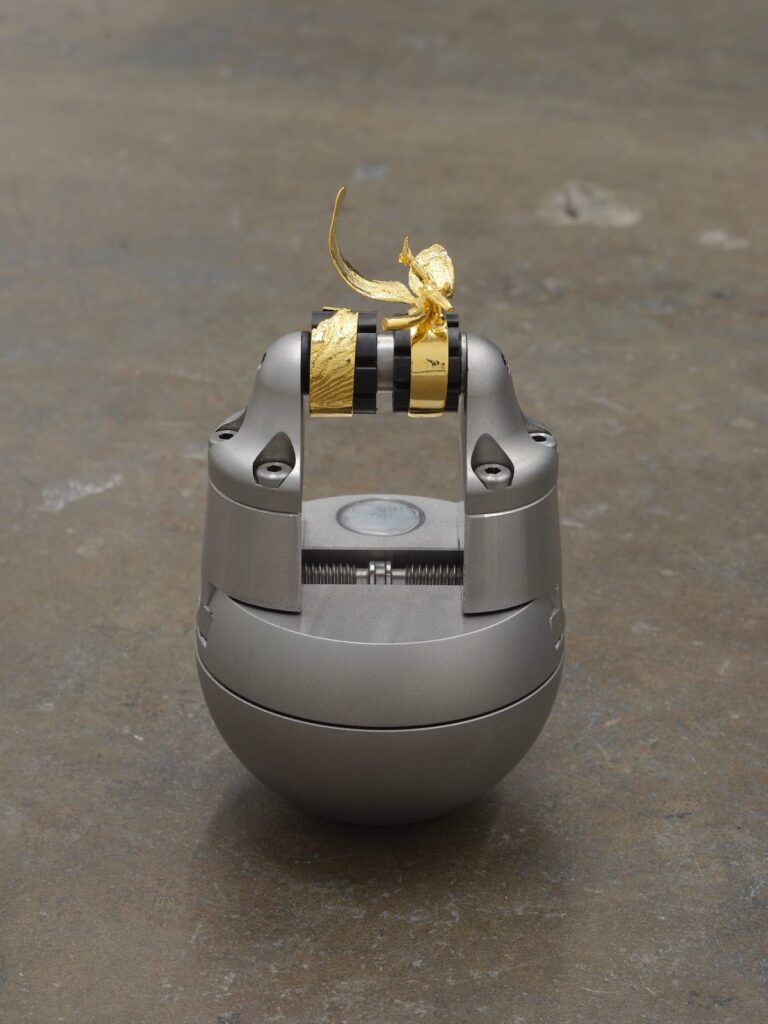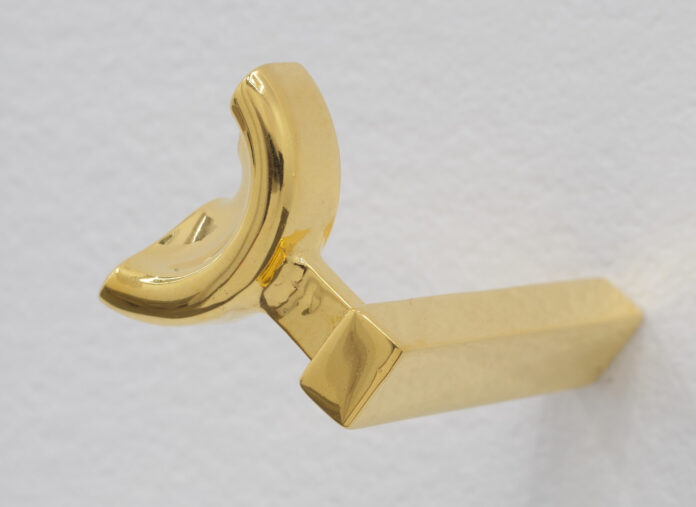In K.R.M. Mooney’s solo exhibition, auxil (through August 25 at Altman Siegel), the Brooklyn-based artist presents a series of conceptually driven sculptures. Though still and silent, each work on view enacts a sense-memory, examining the relationship between objects and the bodies they once served. The exhibition draws a comparison between the process of creating sculpture with performing and composing music, both of which intimately rely on extensions of the body—a vice, a mold, or a musical instrument—to produce form or sound. However, here, the viewers’ attention lies on the process of these paralleling artistic practices, foregrounding the labor of making.
Mooney emphasizes the processual nature of art and music through a re-performance of Terry Riley’s 1964 participatory minimalist composition In C. On July 14, six musicians—Kersti Abrams, saxophone; Michael Cooke, flute; David Falacko, guitar; Matt Ingalls, clarinet; Michelle Lee, flute; and Elizabeth Schenck, saxophone—performed In C within the gallery, encircling Mooney’s bronze cast of a chime, Channel in C. In C includes a musical score and a set of performance directions that emphasize relationality. The re-performance directions instruct players to listen to one another, embrace interactive polyrhythmic patterns, and adapt tempo to stay aligned throughout the piece.

Like the performance instructions, Channel in C bears the lines of the casting process, as the mold’s framework surrounds the chime and gives the viewer access to the making process. Further, Mooney’s choice to cast the chime in bronze, a combination of metals, draws a comparison between element and performer, alloy and ensemble, both of which rely on a delicate balance of interactions. The re-performance set the stage for the exhibitions’ exploration of histories told through the physical form of each work on view, venerating the auxiliary tools used to produce music and metal while highlighting their relationship to one’s body.
In Partials i-xvi, 16 casts of fractured instrument mouthpieces adorn the length of the gallery’s west wall. Each form is meticulously installed in an even, measured line, mirroring the cadence of precise breath that once flowed through them. The worn crevices of each mouthpiece speak to a history of interaction. By focusing on these broken pieces and refashioning them in gold, silver, and brass, the perceived value of these objects shifts. Now, cloaked in precious metal and elevated to an art object, the mouthpiece’s use value is reassigned. By subverting the viewer’s expectation of value, Mooney cleverly points toward the collective means to ascribe value to an object.

Similarly, in Deposition c. (xii) and Deposition c. (xi), Mooney centers the mold as the focal point of the piece while intentionally misusing electroplating techniques to frame the molds. While electroplating is traditionally used to add a layer of precious metals onto objects, here, it is used to frame the cuttlefish bone, a humble material often used as a mold in jewelry and metal arts.
The square section of the bone resembles a topographic map, as delicate wave patterns trace its form. Within a carved recess, the bone is bruised with the shadow of the casting process. In both pieces, the cuttlefish bone is centered as the art object framed and complemented by freckles of precious metal. Instead of appraising the finished piece, the viewer bears witness to the history of production inscribed onto the surface of the bone.

In En V, an engraving block takes shape as the sculpture’s base. Mounted to the palms of the vice, golden cast mistletoe adorns the utilitarian tool. Conjuring the reverence of fresh scent and the memory of lips pressed together, this piece echos the potential energy and haunting aural sensation present in the works on view throughout the exhibition.
The exhibition gestures toward a sensorial landscape yet magnifies its absence. As if caught in amber, the works on view seem to be arrested in a state of enactment. While they no longer serve a body directly, the pieces speak back to a history of interactions inscribed and preserved on the surface of these sculptures. By harnessing the potential energy within these tools, the exhibition directs one to think critically about the value of these auxiliary objects, one’s relationship to them, and each other.
Help us save local journalism!
Every tax-deductible donation helps us grow to cover the issues that mean the most to our community. Become a 48 Hills Hero and support the only daily progressive news source in the Bay Area.






